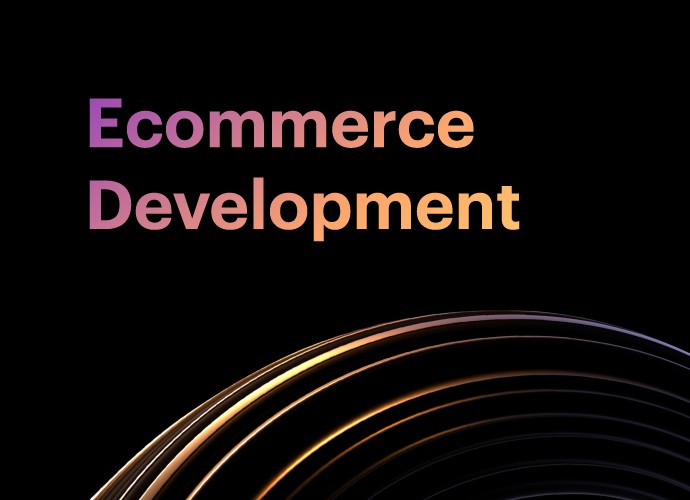Top Advantages, Disadvantages and Limitations of Ecommerce - A Complete Guide

What Is E-Commerce?
E-commerce or electronic commerce, as we know, is the process of purchasing goods and services through the internet. The most commonly used platforms to develop online stores are Magento, Shopify, WooCommerce, BigCommerce, Commercetools, Squarespace, and Wix.
E-commerce can be B2B, B2C, C2C, and C2B – where B is business and C is customer. The functions of e-commerce are mobile commerce, online processing of transactions, electronic funds transfers and payment gateway integration, supply chain management, EDI, and more.
The e-commerce market has certainly grown tremendously since it first began, and the opportunities for e-commerce skyrocketed during the COVID-19 global lockdown in 2020. Buying essentials online has become a necessity and not just a convenience. Online shopping continues to grow as it offers innumerable advantages and benefits; it does have its limitations, though.
The Importance of E-Commerce
- E-commerce allows you to generate orders without human intervention at any time and from anywhere.
- Cashless or electronic payment is made possible by e-commerce through debit or credit cards, e-wallets, and electronic bank transfers.
- It enables 24/7 service availability.
- It facilitates quicker, more efficient, and more reliable communication with customers, vendors, etc.
Let us now check out the advantages and disadvantages of e-commerce.
Advantages of E-Commerce
E-commerce offers advantages to businesses and customers. Let’s first take a look at the benefits for businesses:
Greater Reach
One of the biggest advantages of e-commerce is that you can reach customers globally. Customers can shop at their convenience as long as they have a device connected to the internet. Rather than limiting yourself to the shoppers in a specific locality, you can sell nationally and internationally.
Tracking, Analytics, and Insights
Track traffic and your customers’ buyer journeys and get insights into their behaviour and expectations; you can shape your marketing strategy using these insights as a base. Regardless of the source of the traffic—SEO, Performance Marketing, or conventional methods like flyers and newsletters—you can track customer behaviour. Analytics tools are mostly built into e-commerce sites, allowing you to monitor your customer’s progress through the sales funnel without fuss. Data like customer preferences and feedback, inventory management, marketing strategy effectiveness, etc. is easily measured and converted into actionable insights.
Respond Quickly to Trends and Demands
Businesses can leverage streamlined logistics to respond rapidly to market trends and customer demands. It also allows businesses to launch campaigns and offers on the go to attract more customers and boost sales. This is a noteworthy point when we are discussing the pros and cons of e-commerce.
Lower Cost
As eCommerce platform technologies improve, setting up and maintaining an online store has become super easy and affordable. Compare this with high rentals, overheads, wages, insurance, utility payments, and more when you have brick-and-mortar stores. These overheads can drain your finances. In comparison, an e-commerce business is far easier to start.
Detailed Product Information
You can get detailed information on products, demo videos, customer reviews, etc. on e-commerce sites; this is not possible in physical stores as there is limited space. This information makes it easier for customers to make a purchase decision.
Personalised Messaging
Businesses can send personalised marketing messages as well as relevant product recommendations to regular customers. Targeted communications have a greater chance of converting visitors.
Easy Scalability
The ability to quickly scale up or down is one of the chief benefits of e-commerce for businesses. As it is not defined by available space, businesses can be scaled up or down to respond to consumer demand. You could say that e-commerce stores have unlimited shelf space. You can improve your IT infrastructure, add more channels of communication with customers, upgrade your services and product offerings, and include more payment options. E-commerce platforms are designed to handle extra traffic and transactions as your business grows.
Unrestricted Space
E-commerce sites can display any number of products to consumers, as they are not limited by physical space. Plus, you can make these available to your customers at any time, allowing you to engage in global expansion.
Quicker and Innovative Marketing
When we talk about the advantages and disadvantages of e-commerce, it is imperative to mention this point. You can market products quickly and in novel ways, too. With just a few clicks, you can launch loyalty programmes, announce new product launches, and place targeted ads on social networks. The integration of a recommended product engine into your website can help you cross-sell and upsell products. Omnichannel purchase rates are much higher than single-channel rate.
More Sales Channels
E-commerce offers multiple sales channels, like social media, mobile apps, web portals, banner ads, click-through ads on Google and social networks, videos, blogs, and so on. It allows you to target the customer according to their preferred channel and to provide more information about the product as well.
In addition, businesses can:
- Reduce paperwork
- Deliver better services
- Boost productivity
- Minimise investment
- Build, maintain and improve the brand image
Benefits of E-Commerce for Consumers
- Customers can shop and get responses to their queries around the clock, regardless of where they are
- It provides more detailed product information, enabling them to make informed choices
- Customers can compare prices and buy cheaper options
- Reviews and feedback left by actual users of the product helps visitors make the right choice
- It saves time and effort as customers don’t have to commute through traffic and can purchase from the comfort of their homes
Disadvantages of E-commerce
Like everything else, e-commerce is not a bed of roses. Let us see what the limitations of e-commerce are:
Lack Of Personal Touch
Many consumers still prefer the personal touch that they receive when they visit an actual store and interact with salespeople. This is especially important for stores like boutiques and those that sell couture or high-end products. Customers want to be pampered and feel valued, not just buy the product.
No Tactile Experience
This is a major drawback and something that certainly crops up when we talk about online shopping advantages and disadvantages. Regardless of how well a demo video is made, when purchasing online, customers cannot touch and feel products. This is especially important when it comes to clothes and footwear; being able to smell the fragrance is important when it comes to purchasing perfumes. Unfortunately, this experience is impossible when shopping online. Many people hesitate to buy online because they are unsure of the product quality because they are unable to actually see and touch it.
Comparison
When customers shop online, they can easily compare several products, check out the features, and select the ones with the best features or the lowest price. This can lead to a price race, with businesses cutting prices to boost sales, and this can impact their bottom line. This is one of the biggest disadvantages of e-commerce for businesses.
Internet Access
But of course! Without access to decent internet services, your customers will be unable to make purchases. Many e-commerce sites have numerous features that necessitate high-speed internet access in order to provide a great experience to customers. This means those with poor connectivity can be excluded. This often means people living in remote areas and villages that have less development cannot shop online.
Credit Card Fraud
Unfortunately, this is a problem that more and more online sellers are facing, resulting in revenue loss, penalties, and even loss of reputation. Certain types of businesses are at a higher risk than others; in such a case, you’ll need to decide if e-commerce is the right model for you.
IT Security and Privacy Issues
Malicious organisations and individuals pose a threat to businesses in the form of cyber attacks with ransomware, phishing, and data theft from databases. Identify theft, fraud, and such incidents are on the rise globally. This can have legal and financial ramifications for the business and damage their reputation among consumers. Businesses must implement stringent security protocols to protect critical information from being stolen and misused.
Website Issues
Online business is almost entirely dependent on its website. Even if the site is down for just a few minutes, it can lead to unhappy customers, lost sales, and huge issues for the business. System failure, human errors in data entry, and network outages can all lead to downtime, which can cause damage in the long run.
Complex Taxation, Regulations, and Compliance
It is essential to comply with local, national, and international regulations when you are selling to customers in different regions and nations. This means keeping track of and adhering to complex compliance requirements with regard to financial accounting and taxation. You may require permits or licences in certain countries or regions.
Intense Online Competition
There are thousands of online stores, all vying for customer attention. It can be difficult to get noticed in the crowd. You have to get your act together and do something to stand out.
Shipping Times
Delivery times are often dicey with online shopping, and they can get delayed. Shipping is mostly outsourced to third parties, with the seller not having much control. Many people are reluctant to shop online as it takes too long for their purchase to be delivered. It is vital, therefore, that you are upfront about your delivery time, shipping methods, and even return policies with customers.
Other limitations include:
- There is no universal standard for quality or reliability
- Compatibility problems
- Public keys used by e-commerce are not very secure
To Sum Up
Now that we’ve explored what e-commerce is, along with its advantages and disadvantages, it’s clear that this business model is here to stay. Despite some challenges, the convenience and safety it offers, especially with COVID-19 still a concern, make it a preferred choice for many who avoid crowded stores. If you haven’t yet launched your online store, now is the time! Just share your requirements, and as an experienced eCommerce website development agency, we’ll be happy to recommend the ideal platform and provide you with a quote.

Advanced E-commerce Development Services
Bridge the gap between your storefront and customer with our strategic eCommerce solutions
- E-Commerce Statistics 2026: Key Trends, Growth Insights & Global Shopping Behavior
- Top Gen Z Shopping Trends Shaping eCommerce in 2026
- Adobe Commerce vs Commercetools: Choosing the Right eCommerce Platform for Scalable Success
- Composable Commerce in 2026: A Mainstream Solution for the Future of Retail
- E-commerce Trends That Are Powering Online Retail Forward In 2026
Discover Digital Transformation
Please feel free to share your thoughts and we can discuss it over a cup of tea.









